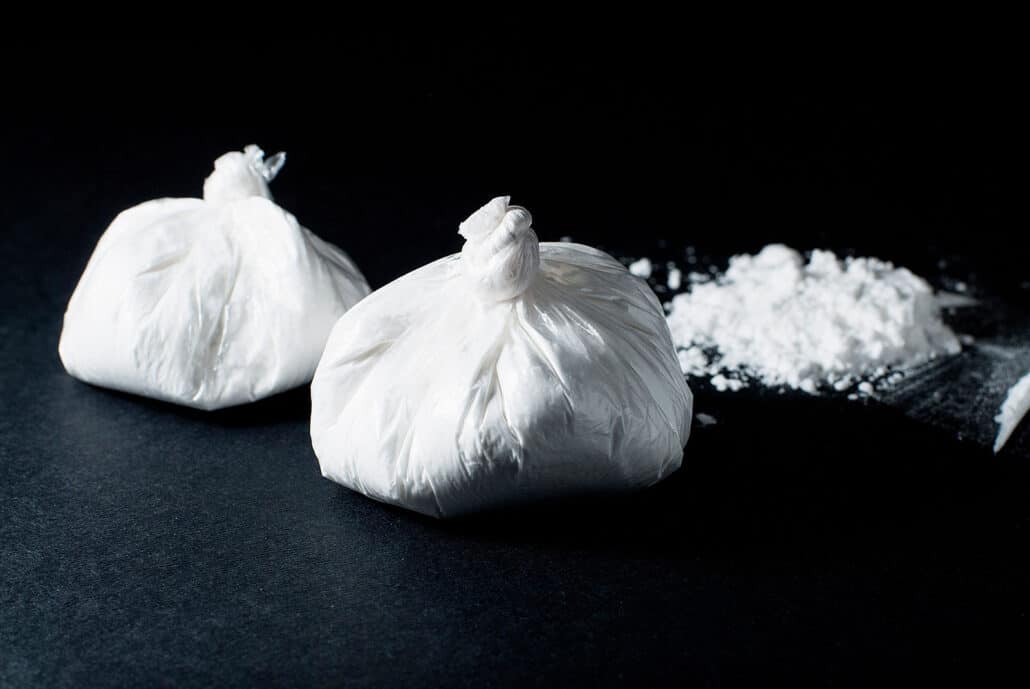Cocaine is a powerful stimulant with addictive properties that directly impact the brain. Because of the drug’s popularity during the ’80s and ’90s, many consider it less of an issue now. However, cocaine presents as much a problem today as it always has. In fact, it’s one of the oldest known drugs; coca leaves and the pure chemical have been abused for over a century.

Table of Contents
About Cocaine
There are two primary forms of cocaine: powdered and “freebase.” Powdered, or hydrochloride salt, dissolves in water and can be taken intranasally or intravenously. Freebase is a compound not yet neutralized into powder often smoked when abused.
Cocaine is sold as a fine, white powder, but street dealers commonly dilute it with inert substances like sugar, talcum powder, or cornstarch. Some may instead combine it with other stimulants, such as amphetamines, or other active drugs, such as procaine (a local anesthetic).
What is an 8-ball of cocaine?
An “8-ball” or “eight-ball” of cocaine is a measurement equal to about one-eighth of an ounce (3.5 grams). It may be purchased for multiple people to use at once or for a high dose. This name may also refer to other illicit substances and drugs, including meth or malt liquor.
Drug dealers and people abusing cocaine most often use these terms. If your loved one uses it, it could indicate a cocaine addiction.
Other Names
Cocaine has several street names to mask its use. Most of these nicknames refer to how the drug is consumed and its physical properties.
The most common slang for cocaine include:
- C
- Coca
- Coke
- Bump
- Blow
- Snow
- Rock
- Charlie
Some conversations about substance abuse may include the term “speedball,” which is cocaine combined with heroin.
Why Take This Much Cocaine?
Cocaine has euphoric effects depending on how fast it reaches the brain, which depends on the consumption method and dose. For example, the brain feels the effects of intravenous injection or smoking within seconds as levels rapidly build up in the blood. The intense onset of euphoria is known as a “rush.” By contrast, the effects from intranasal use have a slower onset and peak.
In all cases, tolerance to cocaine develops rapidly, prompting those addicted to the substance to take higher and higher doses. Prolonged use of high doses, such as binging, can lead to paranoia. Additionally, the crash following the excitation of euphoria is marked by depression, exhaustion, and sleep. When the crash is over, the craving to use again begins.
Side Effects of Taking an 8-Ball
Even one dose of cocaine can lead to a variety of health problems.
Effects on the Eyes
One of the most common symptoms of cocaine use includes large, dilated pupils and bloodshot eyes. This common appearance has led to the condition being known as “cocaine eyes.”
This symptom occurs because cocaine is a stimulant; pupils dilate in response to neurotransmitters, such as adrenaline, involved in the fight or flight response that cocaine triggers. It starts at different points into drug use, depending on how it’s consumed. For example, pupils dilate almost immediately after smoking freebase cocaine, but they’ll take a few minutes if a person smokes it.
Effects on the Face
There are several reasons why a person may bloat after using cocaine. The most common, facial bloating, is known as “coke bloat” among those who use the drug.
One reason bloating occurs may be due to fluid retention. In addition, after snorting cocaine, short-term inflammation and irritation can occur in the nose, which can also contribute to facial bloating.
Bloating might also indicate that another drug is mixed into the cocaine. For example, levamisole is a cattle dewormer often cut into 8-balls, leading to facial swelling.
Effects on the Nose
Snorting cocaine includes particular problems in the nasal passages, such as a frequently runny nose and regular nosebleeds.
Long-term, regularly inhaling white powder can dull a sense of smell or lead to necrosis in the nasal cavity, which may even lead to perforations in the palate as the surrounding tissue dies.
Fortunately, it is possible to treat the so-called “cocaine nose.”
Effects on the Jaw
Using an 8-ball of cocaine can also harm your teeth and gums, especially if ingested by rubbing the drug on them.
This side effect, known as “coke jaw,” happens because of muscle tension throughout the body, accelerating biological functions, sporadic twitching in the mouth, and clenching jaw muscles.
Eventually, using cocaine can lead to erratic mouth movements, teeth grinding, dental erosion, and several other oral problems.
Effects on the Digestive System
Cocaine use can cause multiple forms of gastrointestinal distress. They can occur no matter how the drug is taken, but eating it worsens exposure. They may also happen when someone tries to hide cocaine by swallowing it within a balloon or similar package.
Nausea is the most common abdominal symptom of cocaine use, but long-term use can lead to perforation, bowel decay, ulcerations, colitis, and gangrene.
Effects on Sleep
As a stimulant, cocaine impacts a person’s sleep by increasing their level of dopamine. Dopamine is essential to the sleep cycle, so disrupting it can impact a person’s physical and mental well-being.
Many people who take cocaine feel a decreased need to sleep or eat. In addition, mental alertness is a typical effect, which can also prevent a person from desiring or trying to sleep.
Many also report feeling as though they slept well while displaying signs of insomnia. Because the drug impacts memory, it’s theorized people on cocaine forget how poorly they slept.
Using cocaine at any dose can have profound short-term and long-term side effects. Unfortunately, many of these effects worsen over time and lead to more severe health risks. But with treatment, many are manageable.
Treatment
If you or a loved one struggles with an addiction to cocaine, it isn’t too late to seek treatment for substance use disorder. At Long Island Interventions, we guide you through each level and what services we offer to tackle treatment for illicit substances. Treatment can include a combination of detox, inpatient care, behavioral therapies, and other services.
Rehab treatment for cocaine at a licensed facility may include:
- Medical detox: Usually an essential first step toward recovery, medically-supervised detox can occur in several settings, such as clinics, hospitals, and inpatient and outpatient facilities. Cocaine use has been linked to several types of heart disease and can trigger chaotic rhythms, convulsions, and a coma, so recovering from addiction will often require supervised detox.
- Residential treatment: Clients in residential treatment continue to benefit from 24/7 supervision by medical staff, creating a stable and secure space for those in recovery to find their footing.
- Partial hospitalization: A client has more independence in this situation compared to residential treatment programs. A partial hospitalization program may work for someone highly motivated to quit using cocaine and/or who has already completed a more intensive program.
- Intensive outpatient programs: These facilities are designed for clients to visit during the day for treatment and return home each night. It’s an optimal program for those who have proven not to require 24/7 monitoring to maintain their recovery.
- Transitional/sober housing programs: After completing one of the above programs, some people would also benefit from a sober living environment that facilitates reintegration into society. These programs are supported by peers in similar situations and staff that can provide job opportunities and medical services.
SAMHSA recommends the following therapy in conjunction with treating cocaine addiction:
- Motivational interviewing: Helps people recognize how addiction strains their relationships and prevents them from reaching their goals. It’s designed to help clients overcome apathy and feel optimistic about recovery.
- Contingency management: Works to repair faulty reward circuits in the brain that were rewired by stimulants. For example, taking prescribed medication and passing drug toxicity exams are rewarded.
- Community reinforcement: Promotes positive behaviors from contingency management and builds a support network.
- Cognitive behavioral therapy: Crucial for patients with co-occurring mental health issues.
In addition to the risks associated with using cocaine at any dose, people with an addiction often struggle with the social stigma. However, addiction is never a sign of weakness or a choice; it’s a complex disease that medical professionals can treat. Many people live fulfilling lives after receiving the proper treatment.
Contact Long Island Intervention Today
At Long Island Interventions, we believe that recovery from addiction is possible when we learn from our mistakes. This process helps us emotionally, mentally, and spiritually, allowing us to become more responsible adults. Contact us today to learn more about how we can help you or your loved one.
FAQ
What Does ‘8 Ball’ Mean?
What Happened to Artie Lange?
How many 8-balls are in an ounce?
How many grams are there in 1 ounce of cocaine?
Published on: 2022-09-30
Updated on: 2024-06-21

